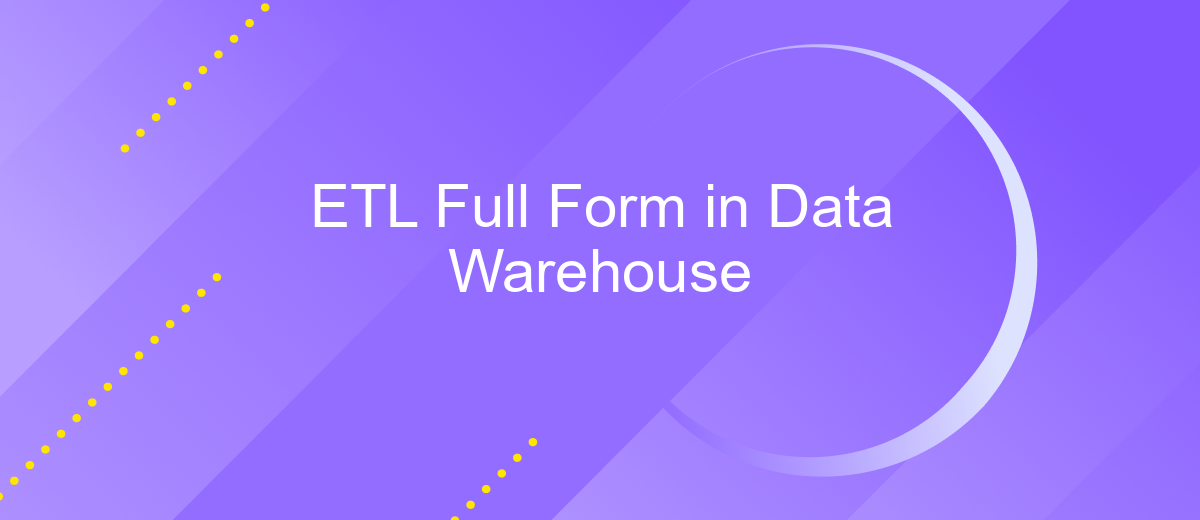ETL Full Form in Data Warehouse
ETL, which stands for Extract, Transform, Load, is a crucial process in data warehousing. It involves extracting data from various sources, transforming it into a suitable format, and loading it into a data warehouse for analysis and reporting. This process ensures that data is accurate, consistent, and ready for business intelligence tasks, making it indispensable for data-driven decision-making.
Introduction to ETL in Data Warehousing
ETL, which stands for Extract, Transform, Load, is a critical process in data warehousing. It involves extracting data from various sources, transforming it into a suitable format, and loading it into a data warehouse for analysis and reporting. This process ensures that data is consistent, accurate, and accessible for business intelligence activities.
- Extract: Data is collected from multiple sources, such as databases, APIs, and flat files.
- Transform: The extracted data is cleaned, formatted, and transformed to meet the requirements of the target data warehouse.
- Load: The transformed data is then loaded into the data warehouse for further analysis and reporting.
Effective ETL processes are vital for maintaining the integrity and usability of data in a data warehouse. Tools like ApiX-Drive can streamline the integration of various data sources, automating the extraction and transformation steps to ensure seamless data flow into the warehouse. This automation helps businesses save time and reduce the risk of errors in their data management processes.
Phases of ETL Process: Extract, Transform, and Load

The ETL process begins with the Extract phase, where data is collected from various sources such as databases, flat files, and APIs. This phase focuses on retrieving the necessary data without altering its original format. Efficient extraction is crucial for ensuring that the subsequent phases have accurate and comprehensive data to work with. Tools like ApiX-Drive can be used to streamline this process by automating data extraction from multiple sources, thereby saving time and reducing errors.
In the Transform phase, the extracted data undergoes various transformations to fit the analytical requirements. This may include data cleaning, normalization, aggregation, and enrichment. The goal is to convert the raw data into a structured format suitable for analysis. Tools and services, including ApiX-Drive, can assist in setting up these transformations by providing pre-built connectors and customizable workflows. Finally, the Load phase involves loading the transformed data into a target data warehouse. This step ensures that the data is readily available for querying and analysis, enabling businesses to make informed decisions based on accurate and timely information.
Benefits of Implementing ETL in a Data Warehouse

Implementing ETL (Extract, Transform, Load) in a data warehouse offers numerous benefits that enhance data management and decision-making processes. ETL processes streamline the flow of data from various sources into a centralized repository, ensuring data consistency and reliability.
- Data Integration: ETL tools consolidate data from multiple sources, providing a unified view, which is critical for comprehensive analysis.
- Data Quality: ETL processes include data cleansing and transformation, improving the accuracy and quality of the data stored in the warehouse.
- Time Efficiency: Automated ETL workflows reduce manual data handling, saving significant time and effort.
- Scalability: ETL solutions can handle growing data volumes, making it easier to scale data operations as the business expands.
- Enhanced Decision Making: With clean, integrated data, organizations can make more informed and timely decisions.
For seamless integration and automation of ETL processes, services like ApiX-Drive can be highly beneficial. ApiX-Drive facilitates the connection between various data sources and the data warehouse, simplifying the ETL setup and ensuring continuous data flow without manual intervention. This leads to more efficient data management and robust analytical capabilities.
Challenges and Best Practices in ETL Implementations

Implementing ETL processes in data warehousing can present numerous challenges, including data quality issues, performance bottlenecks, and scalability concerns. Ensuring that data is accurate, consistent, and timely is crucial for the success of any ETL implementation.
One of the primary challenges is managing the complexity of data integration from various sources. This often involves dealing with different data formats, inconsistent data structures, and varying data update frequencies. Additionally, performance issues can arise when processing large volumes of data, leading to delays and inefficiencies.
- Ensure data quality through validation and cleansing processes.
- Optimize ETL processes for performance and scalability.
- Use automation tools like ApiX-Drive to streamline data integration.
- Implement robust monitoring and error-handling mechanisms.
Adopting best practices can significantly enhance the efficiency and reliability of ETL implementations. Utilizing tools like ApiX-Drive can help automate and simplify the integration of multiple data sources, ensuring seamless data flow and reducing the risk of errors. By focusing on these strategies, organizations can overcome common ETL challenges and achieve a more effective data warehousing solution.
Conclusion and Future of ETL in Data Warehouse Systems
In conclusion, ETL (Extract, Transform, Load) processes play a critical role in the efficient functioning of data warehouse systems. They ensure that data is accurately extracted from diverse sources, transformed into a consistent format, and loaded into the warehouse for analysis. As organizations continue to generate vast amounts of data, the demand for robust ETL solutions will only grow. The future of ETL lies in the integration of more advanced technologies like AI and machine learning to automate and optimize these processes, making them faster and more reliable.
One such advancement is the use of integration services like ApiX-Drive, which simplifies the setup of data workflows between various applications and systems. By leveraging such tools, businesses can streamline their ETL processes, reduce manual intervention, and minimize errors. As cloud-based data warehousing becomes more prevalent, the ability to seamlessly integrate and manage data from multiple sources will be crucial. Therefore, the evolution of ETL will continue to focus on enhancing automation, scalability, and real-time processing capabilities to meet the ever-growing data needs of modern enterprises.
FAQ
What is the full form of ETL in the context of data warehousing?
Why is ETL important in data warehousing?
What are the main stages of the ETL process?
Can ETL processes be automated?
What are some common challenges in the ETL process?
Time is the most valuable resource for business today. Almost half of it is wasted on routine tasks. Your employees are constantly forced to perform monotonous tasks that are difficult to classify as important and specialized. You can leave everything as it is by hiring additional employees, or you can automate most of the business processes using the ApiX-Drive online connector to get rid of unnecessary time and money expenses once and for all. The choice is yours!

